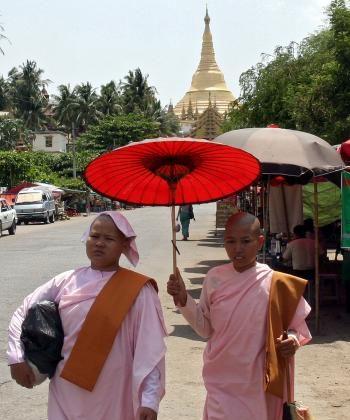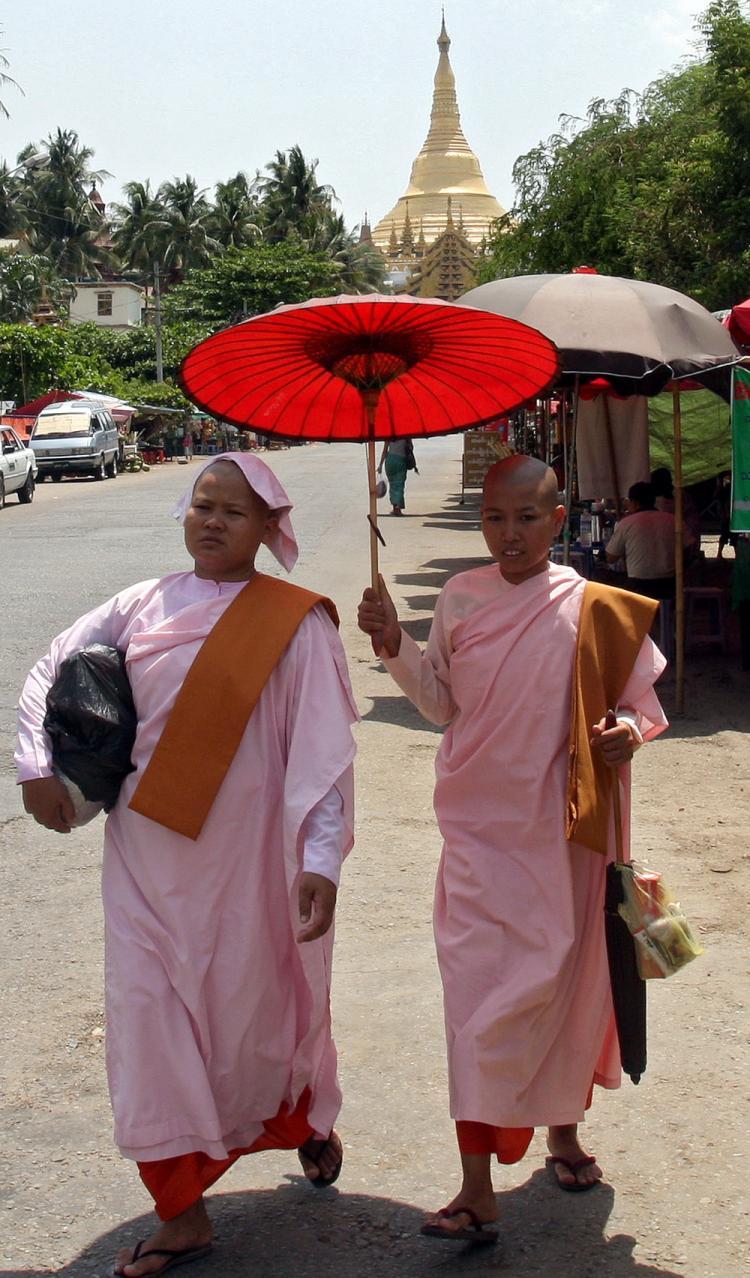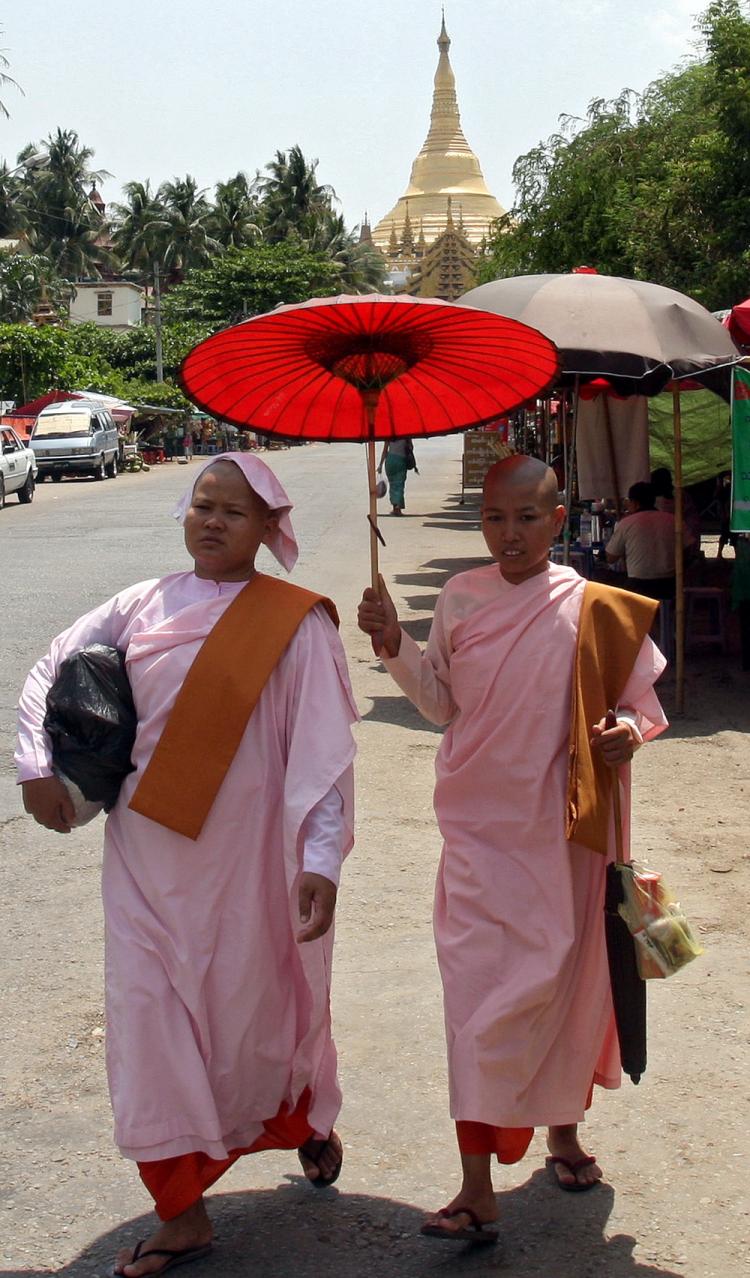This summer marks three years since the world first saw the smuggled cell phone footage of ferocious attacks by Burmese junta forces on the country’s Buddhist monks. Since 2007, Burma’s monks have faced continuous abuse and tight surveillance by the country’s military rule.
“I’m being watched all the time,” one monk said in 2009, in a report by Human Rights Watch.
“I am considered an organizer. Between 12 p.m. and 2 p.m. I am allowed to go out of the monastery. But then I’m followed. I had to shake off my tail to come to this meeting today,“ the monk said. ”I’m not afraid, not for myself. I’m not afraid to tell foreign journalists what happened. And I’m prepared to march again when the opportunity arises.”
In 2007, tens of thousands of monks began marching to protest poor living conditions in Burma.
The monks were shot, beaten, and arrested in droves. The monks that remained in the country after the violence are still being detained, tortured, and forced to do hard labor and the media’s suppression by junta powers has made it difficult for the world to know the full extent of the atrocities.
Other monks have gone into hiding and some have fled Burma. In March, Reuters reported that most of the monks who found asylum in the United States and have given up their robes, find the need to support themselves too great.
Some monks however are still active, in the wake of the revolution, a group of senior monks formed the All Burmese Monks Alliance (ABMA), and two other senior monks founded International Burmese Monks Organization (IBMO). Both organizations support monks inside and outside Burma as they continue to struggle for basic rights.
The IBMO website reminds readers that Buddha prescribed 10 rules for kings. These rules include: almsgiving, liberality, justice, kindness and endurance. For centuries, Burmese kings followed these rules. Even after all that has happened to them, the monks still hold hope, and strive for the day when Burma’s rulers will again adhere to these principles.
Buddhism is Burma’s main religion and out of a population of 54 million, Human Rights Watch quoted estimates that there are between 300,000 and 400,000 monks, and around 50,000 nuns.
Burma’s monks have historically played an active role in both spiritual and secular society.
Supported by patronage of kings and commoners, the Buddhist Sanghas (order of monks), were responsible for education, yearly festivals, making offerings (merit making), the ordination of young novices.
“Any other communal activity in the village—circled around the monastery,” according to the Human Rights Watch report, which said that the goodwill of the Sangha was always sought by kings and more lately by political leaders including former opposition leader and Nobel laureate Aung San Suu Kyi.
“I’m being watched all the time,” one monk said in 2009, in a report by Human Rights Watch.
“I am considered an organizer. Between 12 p.m. and 2 p.m. I am allowed to go out of the monastery. But then I’m followed. I had to shake off my tail to come to this meeting today,“ the monk said. ”I’m not afraid, not for myself. I’m not afraid to tell foreign journalists what happened. And I’m prepared to march again when the opportunity arises.”
In 2007, tens of thousands of monks began marching to protest poor living conditions in Burma.
The monks were shot, beaten, and arrested in droves. The monks that remained in the country after the violence are still being detained, tortured, and forced to do hard labor and the media’s suppression by junta powers has made it difficult for the world to know the full extent of the atrocities.
Other monks have gone into hiding and some have fled Burma. In March, Reuters reported that most of the monks who found asylum in the United States and have given up their robes, find the need to support themselves too great.
Some monks however are still active, in the wake of the revolution, a group of senior monks formed the All Burmese Monks Alliance (ABMA), and two other senior monks founded International Burmese Monks Organization (IBMO). Both organizations support monks inside and outside Burma as they continue to struggle for basic rights.
The IBMO website reminds readers that Buddha prescribed 10 rules for kings. These rules include: almsgiving, liberality, justice, kindness and endurance. For centuries, Burmese kings followed these rules. Even after all that has happened to them, the monks still hold hope, and strive for the day when Burma’s rulers will again adhere to these principles.
Buddhism is Burma’s main religion and out of a population of 54 million, Human Rights Watch quoted estimates that there are between 300,000 and 400,000 monks, and around 50,000 nuns.
Burma’s monks have historically played an active role in both spiritual and secular society.
Supported by patronage of kings and commoners, the Buddhist Sanghas (order of monks), were responsible for education, yearly festivals, making offerings (merit making), the ordination of young novices.
“Any other communal activity in the village—circled around the monastery,” according to the Human Rights Watch report, which said that the goodwill of the Sangha was always sought by kings and more lately by political leaders including former opposition leader and Nobel laureate Aung San Suu Kyi.


